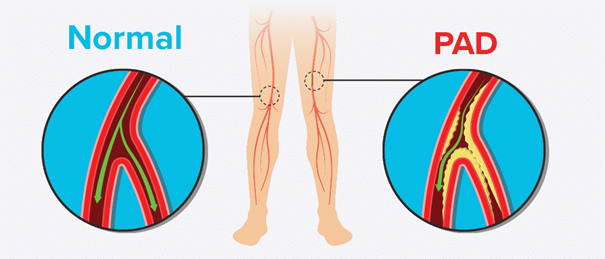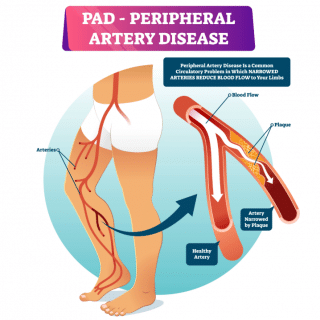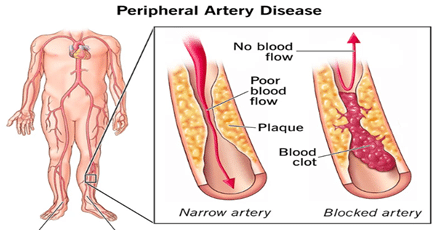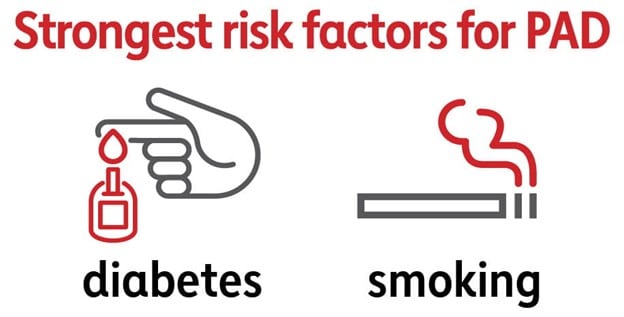
PAD, is a condition in which your arteries are narrowed and can’t carry as much blood to the outer parts of your body, like your arms and legs.
If you don’t get treatment, you could be more likely to have a heart attack or stroke. It can also lead to you needing to have a limb removed (amputation).

What Causes PAD?
The most common cause of PAD is a blockage in the arteries due to deposition of fat and cholesterol and form plaques that build up in the arteries.
Over time, plaque buildup makes your arteries harder and narrower. It’s a lot like old plumbing in a house. With plaque in your arteries, your blood flow slows, and your body doesn’t get the oxygen it needs.
Book An Appointment


What Are the Risk Factors for PAD?
If you have heart disease, you have a 1-in-3 chance of having PAD. Other things that raise your chance of having PAD include:
- Age (older than 50)
- Diabetes
- High cholesterol
- High blood pressure
- Obesity
- Not being active
- Smoking

How Does Smoking Affect PAD?
Smoking is the single biggest PAD risk factor It raises your risk for PAD by 400% compared with nonsmokers.
What Are the Symptoms of PAD?
You may have muscle pain or cramping because there’s less blood flow to your legs. This type of pain is called claudication. You usually feel it when you walk or climb stairs, but it stops when you rest.
Other signs and symptoms in advanced PAD?
- Changes in the color of your legs
- Erectile dysfunction, in men with diabetes
- Leg weakness
- Fatigue while walking,
- Legs that are cooler than your arms
- Loss of hair on your legs
- Shiny skin on your legs
- Slow toenail growth
- Non healing ulcers
If you have PAD in your arms, you’ll have similar symptoms to the ones in your legs. You may feel pain, cramps, or heaviness during activities, but it goes away when you rest.
How Do Doctors Diagnose PAD?
- CT / MRI Angiogram
- Ankle-brachial index
- Blood tests
- Ultrasound .
How Do Doctors Treat PAD?
You might need medical treatments:
- Angioplasty. This procedure uses a catheter, a thin tube, to put a tiny balloon into your artery. When it’s inflated, the balloon pushes plaque out to widen the artery and restore blood flow. Your doctor might also put a mesh tube called a stent into your artery to keep it open.
- Medications.
- Surgery.
Can PAD Lead to Other Problems?
You may have build-up in the arteries of your heart. This is called coronary artery disease. You may also have it in the ones that go to your kidneys. This is known as renal artery disease. This can also happen in the carotid arteries, which carry blood to the brain, leading to a stroke.
What Could Help Prevent PAD?
- stop smoking
- Regular exercise
- Healthy eating
- Manage conditions: like high blood pressure, diabetes, and high cholesterol.
